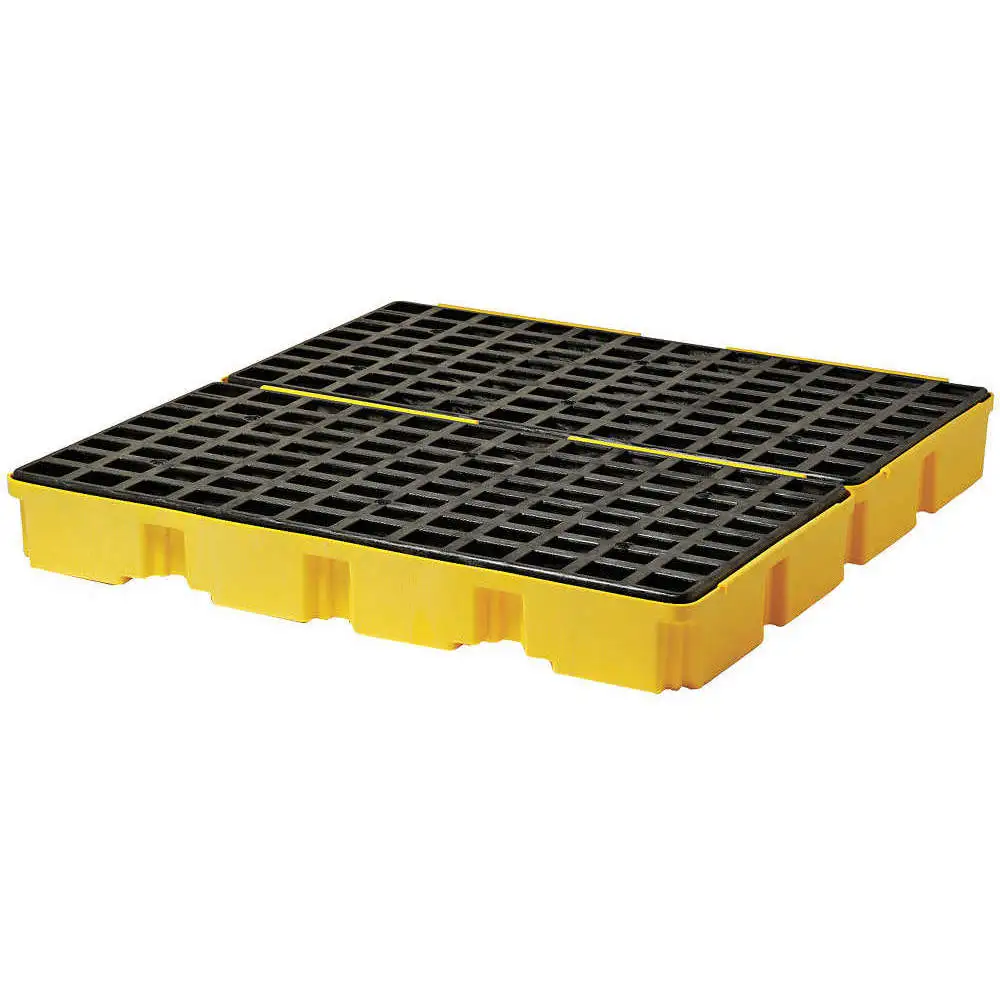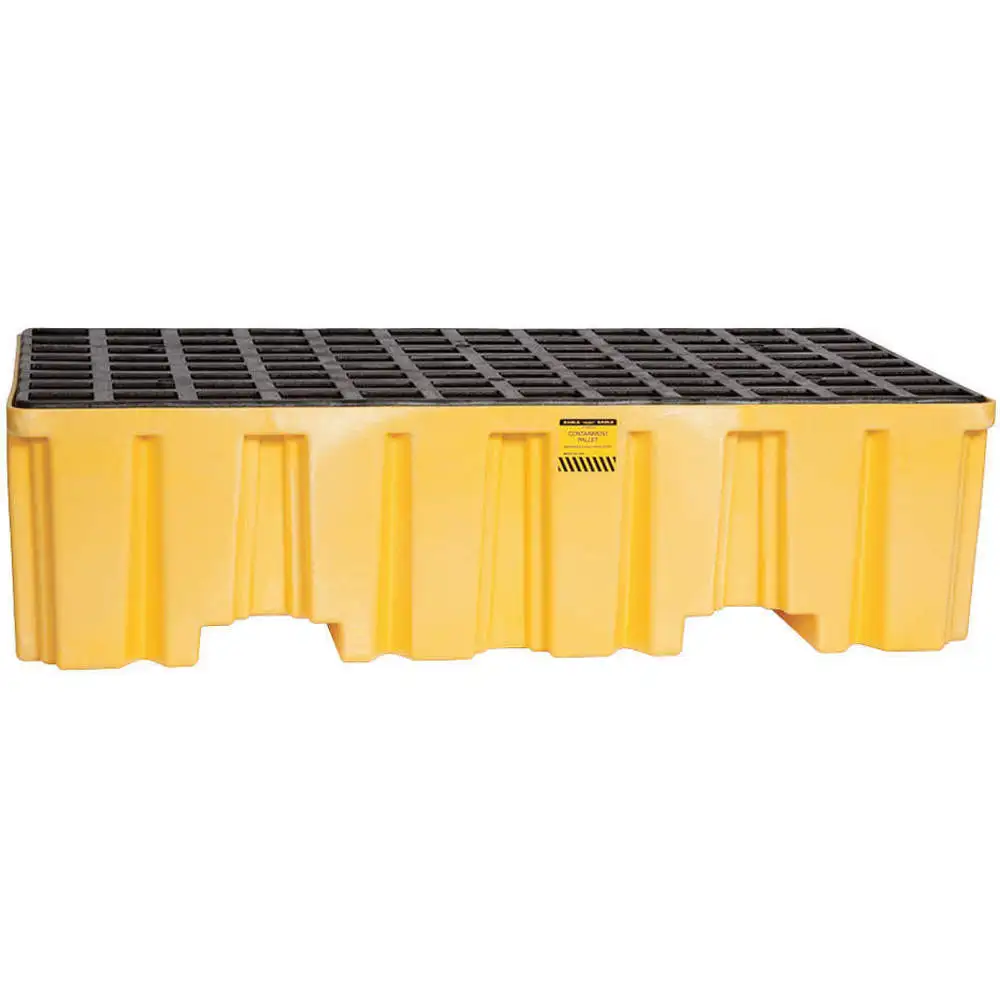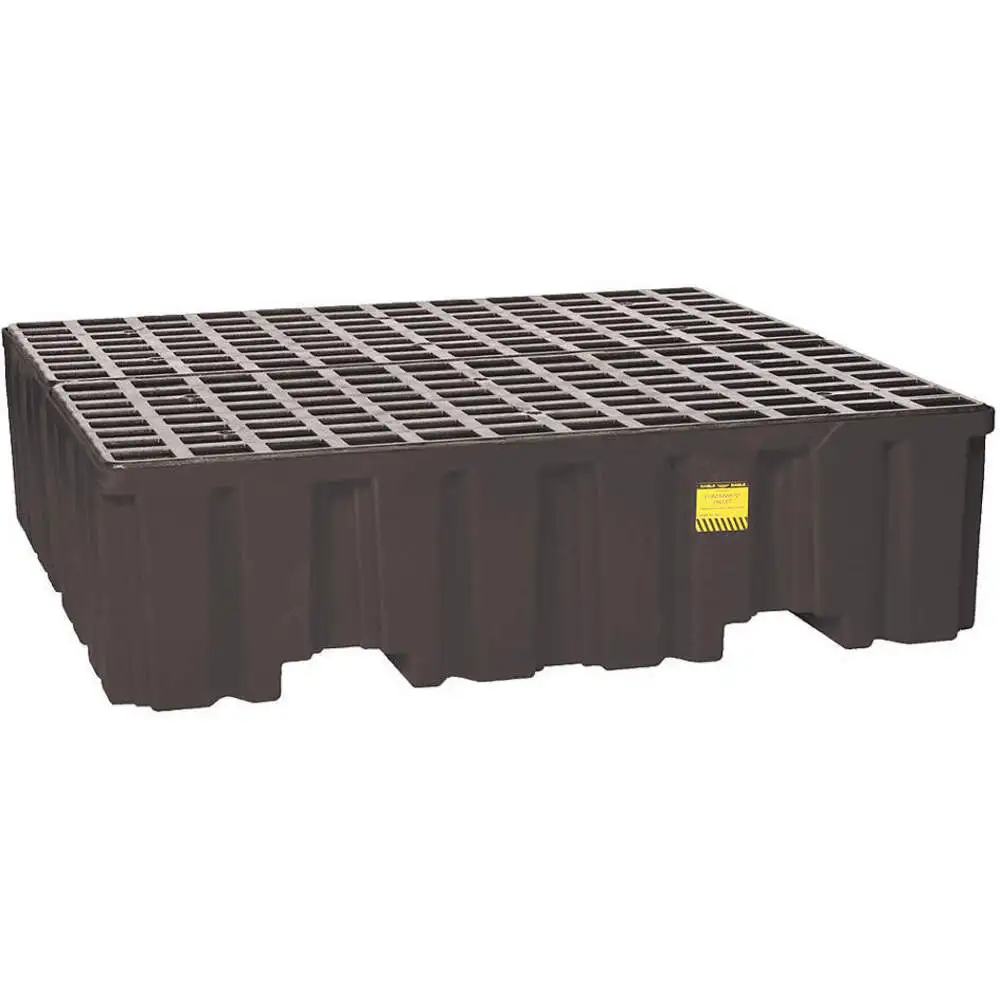Eagle 1634 drum spill containment pallet is suitable for storing & containing potentially hazardous materials safely in factories, warehouses and chemical facilities where the risk of liquid drum contents leaking or causing environmental contamination is a concern. It features a large platform capable of accommodating multiple drums, safeguarding against spills and leaks.
Features:
- Eagle 1634 drum spill containment pallet features forklift pockets for easy manoeuvring.
- It has removable flat top grating for cleaning spilt contaminants.
- This modular spill platform is equipped with built-in U-channels for easy connection with the modular platform.
- It features polyethylene construction for structural rigidity and impact resistance.
Compatible Accessories:
- Eagle 1689 & 1689B Spill Pallet Ramps: These yellow / black coloured ramps are used to load drums onto pallets and modular spill platforms.
Standards and Approvals:
Frequently Asked Questions:
Q. What is sump capacity of Eagle 1634 drum spill containment pallet?
A. 60 gallons.
Q. What is the load capacity of this pallet?
A.
- This spill contaminant pallet can withstand loads up to 10000 lb.
Q. What is the spill capacity of this Eagle drum spill containment pallet?
A. It has a spill capacity of 60 gallons. Customers searching for a drum spill containment pallet with a higher spill capacity can opt for Eagle 1640 spill containment pallet having a spill capacity of 132 gallons.
Q. What are the factors to consider while choosing this Eagle drum spill containment pallet?
A. Major factors include capacity, material, chemical compatibility, regulatory compliance, leak protection, accessibility, mobility, additional features and durability.
Q. What safety precautions should I take when using this Eagle 1634 spill containment pallet?
A.
- Ensure proper placement on a level surface to prevent tipping.
- Regularly inspect for damage or wear.
- Secure drums and containers to prevent accidental movement.
- Use compatible materials and avoid storing incompatible chemicals.
- Train personnel on spill response and emergency procedures.
- Maintain spill response kits nearby for quick action.
- Comply with environmental and safety regulations.
- Monitor for leaks and promptly address any spills.
- Handle with care and wear appropriate personal protective equipment (PPE).
- Dispose of collected spills and contaminated materials safely.
 Change Country
Change Country








